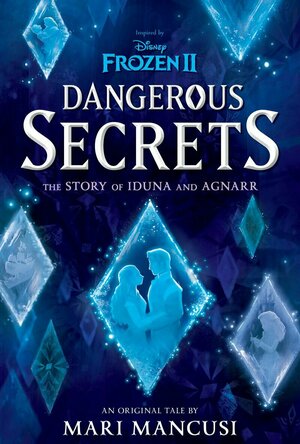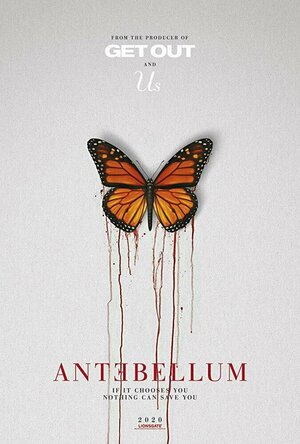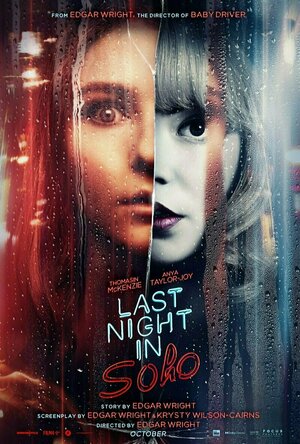Lottie disney bookworm (1056 KP) rated Frozen 2: Dangerous Secrets: The Story of Iduna and Agnarr in Books
Dec 29, 2020
The 2019 film undoubtedly revealed some of these secrets, such as Iduna being Northuldra and saving Agnarr as a child as well as the two of them venturing to Ahtohallan to find the answers behind Elsa’s powers. Unfortunately, thanks to the film, we also know that they never completed their journey.
Cue Mari Mancusi who expertly bring the monarchs back to life through her writing and forms these little-known characters into best friends, young lovers and torn parents, always just trying to do the next right thing.
The back stories of Agnarr and Iduna are nothing short of brilliant: the reader meets both characters in the Enchanted Forest on the fateful day of the dam celebration and we experience the wonder of both worlds colliding, along with the following danger and confusion from a first-person perspective.
I thoroughly appreciated how Mari Mancusi didn’t have to explain what had happened between the Arendellian forces and the Northuldra: Mancusi knows that the reader already knows the true turn of events from the movie. All throughout Dangerous Secrets this “inside knowledge” is used beautifully: allowing us to experience events as our protagonists do, but without diluting the tension and excitement with explanations.
The reader grows up alongside the future King and Queen, seeing their friendship blossom and experiencing their respective heartbreaks and secrets. The Northuldra are widely believed to be enemies of Arendelle due to the King’s death and the rumours surrounding it. Iduna’s hardship of hiding her true identity is matched only by her grief of losing the only family she has ever known. Similarly, Agnarr has lost a father, his best friend General Matthias and now has to learn how to be a King. Even when they find solace in their friendship and the later romance that this grows into, Iduna is not royalty: their love is doomed from the start…isn’t it?
Regular readers of my reviews will know I loved Jen Calonita’s “Let it Go” but felt that towards the end the writing emulated the movie verbatim in places. I found Kamilla Benko’s “Forest of Shadows” interesting and unique but ultimately it tried too hard to insert different elements into the Frozen universe that we know and love.
In my opinion, Dangerous Secrets contains none of these criticisms.
Elements of the movie are included, of course they are! Agnarr and Iduna’s reading tree is taken straight out of Elsa’s/Ahtohallan’s ice memories; Oaken’s trading post and sauna is briefly mentioned as a rest stop during one of the couple’s adventures and the wonder of chocolate is something Elsa and Anna definitely inherited from their parents!
The difference with this novel is that any references to the movie are easter eggs: elements that we love to spot; they are not brash and in-your-face; they are subtle and add to the story rather than creating it entirely. For example, I loved the inclusion of Grand-Pabbie and the trolls. I also suspect we may have met Kristoff’s mother – perhaps opening the door to another book from Mari Mancusi?
Of course, Dangerous Secrets can only end with the fateful voyage made by the royal couple and, true to form, this made me cry my little heart out. I know from the author’s note that Mari Mancusi is a mother herself but I feel that I would have known this anyway through the sheer heartbreak she portrays through Iduna, and later Agnarr. From their first discovery of Elsa’s powers; to Anna’s accident; to acknowledging that they were endangering Elsa by asking her to “conceal, don’t feel” right up until the couple’s realisation that they will never see their daughters again: the writing is powerful, hard-hitting and, with Ahtohallan’s last gift, stunningly beautiful.
This is a five-star glimpse into the King and Queen of Arendelle and a must-read for any fan of Frozen.
Will Mancusi reveal the secret of the ice-gatherer woman’s identity next?
Only Ahtohallan knows.
BankofMarquis (1832 KP) rated Antebellum (2020) in Movies
Oct 12, 2020
I now know why the producers of this film decided to get this out now vs. waiting to release it theatrically sometime in 2021.
Billed as "Jordan Peel's GET OUT meets an M. Night Shyamalan film", ANTEBELLUM is a movie told in 3 acts. In the first act, Janelle Monae's character (who is given the slave name Eden) is brought into a Southern, Antebellum, plantation. This part of the film shows the desperation and despair that slaves lived in at a time that they had no rights and were under the whims of their White Slave Owners. The character of Eden is fiesty and is constantly looking to escape, but...eventually...is worn down by her masters and capitulates...to a point. This is the most successful part of this film, but has been better covered in other films like 12 YEARS A SLAVE.
The 2nd part of this movie takes place in "modern day" and concerns a successful author, Veronica Henley (also played by Monae). This character specializes in books and motivational speeches designed to empower the African-American woman. This part of the movie highlights Monae's appeal as a screen presence and she overcomes some weak writing to rise above. This part of the film, ultimately, falls flat for me, but I was curious as to how these 2 very different pieces of this movie fit together.
The 3rd part of this movie answers that question. If only, it answered it better....for pieces of this part of the movie works well...but others fall very, very flat resulting, ultimately, in a less than satisfying film-going experience that could have used some further work.
Monae's performance (for the most part) shines in this movie. She handles both characters that she is playing in a sharp, charismatic way. I could really buy that she is a popular "motivational" speaker (in the modern part of the movie). I could also see the fire in her spirit during the "Antebellum" part. What I didn't buy (and a weakness in the script doesn't help this part) is her "capitulation" to her slave owners.
And...that's about if for performances that stood out. All of the white actors playing the slave owners (mainly Eric Lange, Jena Malone and Jack Huston) are capital "E" evil. While this is probably historically accurate, they weren't evil enough - or multi-dimensional enough - to keep my attention. Compounding that issue is that the other characters in the "modern part" of the film are very generic and forgettable.
And then we get to the 3rd part of this film - where the first 2 parts are melded together.
It is one of those types of storytelling tropes that either you "go with it" or you don't. If you don't, the movie will lose you right there. If you do (and I did), then it is an interesting place to go and blends the first 2 parts of the film "well enough". My problem is that I didn't care enough about the characters to care about what happens.
I lay the blame of this on filmmakers Gerard Bush and Christopher Renz. They co-wrote and co-directed this movie. I had never heard of them, or (I don't think) I've encountered their work before, but upon reading up on them, they are listed as "Visionary Filmmakers Bush+Renz". If they are visionaries, they sure didn't bring much vision here. It was all pretty straightforward and could have used some other kind of "visionary" to lift this movie to a higher level.
You know, like Jordan Peele or even M. Night Shyamalan.
Letter Grade C+
5 stars (out of 10) and you can take that to the Bank(ofMarquis)

Baby Feed Timer - Breastfeeding Baby Tracker
Lifestyle and Medical
App
“Simple, quick and easy to use – a must for night feeds!” "All the answers to your...

Prayer Prompter - Christian Prayer App
Productivity and Lifestyle
App
A God-centered, worship-based prayer app that stores and organizes Scripture passages and prayer...

FreePrints – Photos Delivered
Photo & Video and Shopping
App
Print photos quickly, easily and for FREE! Ordering your free prints couldn’t be easier. Just...
Ivana A. | Diary of Difference (1171 KP) rated Thorn in Books
Aug 3, 2020
<a href="https://diaryofdifference.com/">Blog</a>; | <a href="https://www.facebook.com/diaryofdifference/">Facebook</a>; | <a href="https://twitter.com/DiaryDifference">Twitter</a>; | <a href="https://www.instagram.com/diaryofdifference/">Instagram</a>; | <a href="https://www.pinterest.co.uk/diaryofdifference/pins/">Pinterest</a>;
#1 <a href="https://www.goodreads.com/review/show/3214627135">Thorn</a>; - ★★★★★
<img src="https://diaryofdifference.com/wp-content/uploads/2020/05/Book-Review-Banner-56.png"/>;
Thorn by Intisar Khanani is such a powerful story about finding your true self, fighting against the injustice and loving with your whole heart.
<b>Synopsis</b>
Princess Alyrra grew up in a cruel family, fearing that her brother might hurt her every day. She despises the fact that she needs to behave in a certain way to appeal to the court. Her despise grows even more when she learns that she's been betrothed to the powerful Prince Kestrin, a stranger from another kingdom.
But when a sorceress robes Alyrra of her true identity, she sees this as an opportunity to start a new life as a goose girl, where she doesn't have to pretend in front of everyone and be her true self.
Soon enough, she realises what is actually going on with the regular people in the kingdom. The poverty, the crimes, the fact that the royal guards don't care at all. The fact that the street thieves have to make their own sets of rules in order to keep the peace on the streets.
When a big tragedy hits home, Alyrra knows she needs to make a choice. Stay here and give up the identity of the princess forever, or go back to being a princess, only for the sake of saving the people.
<b><i>"It is rare for someone who wants power to truly deserve it."</i></b>
<b>My Thoughts:</b>
Thorn is the first book of the Dauntless Path series, and I am so happy I had the chance to read it! Very powerful book, with a very strong female character, who is not afraid to say what she thinks and fight for what she believes in!
<b><i>"I've found that acting when you are afraid is the greatest sign of courage there is."</i></b>
What I loved about Alyrra's character is that it shows us how much of a hardship it can be to make a certain choice. It is not just black and white. At first, we all root for the - get your identity back. However, Alyrra has been abused all her life. Her brother abused her physically and her mother mentally. She then had to deal with the pressure of being a princess. Following rules. Not saying what she really thinks, but what others want to hear. She is then promised to marry someone she doesn't know and pretend to be someone she is not, again.
<b><i>And suddenly, she can be someone else.</i></b>
She has the chance to start a brand new life. A person that is not in the spotlight. She can think and speak freely. And that is why I understand her choice to want to stay as a goose girl forever.
<b><i>"We all have our unspoken sorrows, hopes we cannot mention, choices we may yet regret."</i></b>
But then she sees the true picture of how people are treated in the kingdom. How people live. The injustice that happens on the streets every single day. And then she also gets the attention of the prince and being who she is, she is not afraid to say her mind.
But to truly change things, she needs to become a princess again. And making such a choice comes not only with consequences, but with huge sacrifices too.
The ending of Thorn was very well written and very satisfying. I am looking forward to reading more about Alyrra's story and get more answers in the next book. I cannot recommend Thorn enough!
Thank you to ReadersFirst and Hot Key Books, for sending me a copy of this book in exchange for an honest review.

Good&Co: Personality Test
Business and Education
App
Hate your job? Great! That’s why we’re here. Is your employment satisfaction at an all-time low?...

Vocabulary Flashcards - SAT
Education and Games
App
Master the 350 most important SAT vocabulary words with fun flashcards for your Android! Study and...

Siren's Call (Dark Tides #1)
Book
Between desire and love there are some things that can’t stay buried, even in the deep of the...
Emma @ The Movies (1786 KP) rated Last Night in Soho (2021) in Movies
Oct 15, 2021
Eloise dreams of being a fashion designer, and when she gets accepted to study fashion in London she thinks her dreams have come true. But London life isn’t quite what she hoped. When life in halls becomes too much, she finds herself an attic room to rent. Noisy roommates might have been the easier option when suddenly, every night, Eloise is transported to the 60s where the life of Sandie unfolds in front of her. Swept away in the glamour, the tables turn when Sandie’s life beings to twist into a new stark reality.
The start of Last Night in Soho pulled me in, the music had me, if nothing else I knew I’d be able to enjoy myself with the soundtrack. It’s a very nostalgic bit of listening for me having been brought up in a household that’s listening was a little more retro.
As the story develops, and Eloise along with it, you’re eager for answers. But that process feels drawn out and at some point it’s easy to see where it’s going to go before it’s properly alluded to, which took away some of the impact for me.
Our main character Eloise (played by Thomasin McKenzie), definitely has the right look and demeanour for this part. While in the end it’s a good performance though, I feel like the role would have been better suited to someone a little less on the nose. They've conveyed the mental health portion of the role nicely (the depiction of her mother felt a little Harry Potter but did get the point across), and she managed to encapsulate some of the terror, but again, it felt… cheesy? Maybe not the right word, but it was close to not giving it enough impact in the story, and I could see this working more on the horror side of things with some changes.
Ahh, Anya. Another from my list of people on the credits that make me go “meh”. I was sold with this performance though. I'm not fully on the Joy train, but I very much enjoyed this performance. Her attitude and behaviour the whole way through sold the character and… that’s it… really great. (So many things I want to say and so many that constitute spoilers.)
The supporting cast has some big names. Diana Rigg in her last performance gave a much needed edge to the scenes she was in. Matt Smith was cockney Matt Smith. My only particular call out would be for the character rather than the actor. The role of Eloise’s “boyfriend” was verging on problematic, both from a boyfriend and a writing point of view. A wet blanket of a character that seemed to be too close to comic relief without committing one way or the other. Even allowing for some sort of “support” for Eloise, this role could have been divvied out to a selection of other characters.
Last Night in Soho is stylish. The homely naive Eloise meeting glam forward Sandie really came together, and seeing Sandie’s influence seeping into the present day in the fashion and demeanour was interesting. The colours, the sets, the costumes, you can’t fault any of it.
Not being an expert in cinematic mastery behind the scenes, some of these things can escape me, but even I couldn’t miss the stunning editing and effects. Everything is seamless, and when you see some of those scenes I’m sure you’ll be blown away too.
On the technical side, this film is probably very close to a 5 star film, but with the character issues I had and the feeling that there was something missing from the ending, I’m even now not sure what my score for Last Night in Soho is going to be...
Originally posted on: https://emmaatthemovies.blogspot.com/2021/10/last-night-in-soho-movie-review.html



